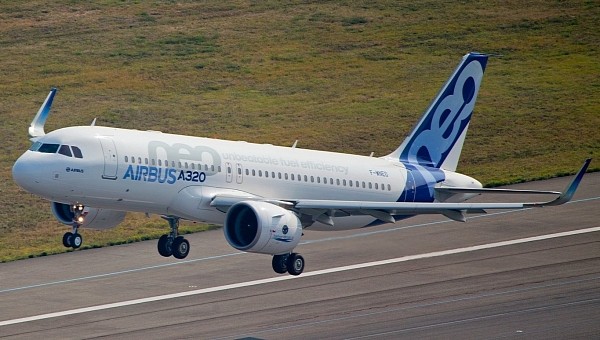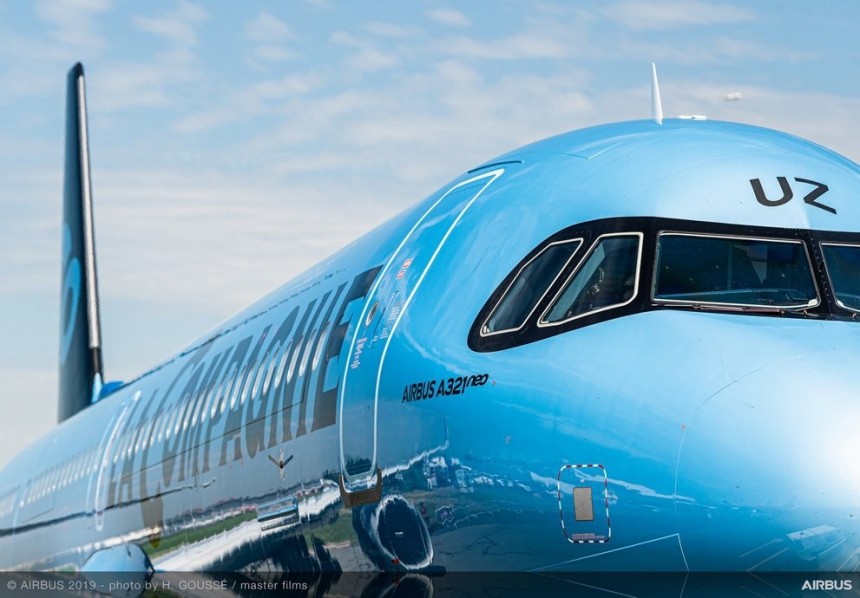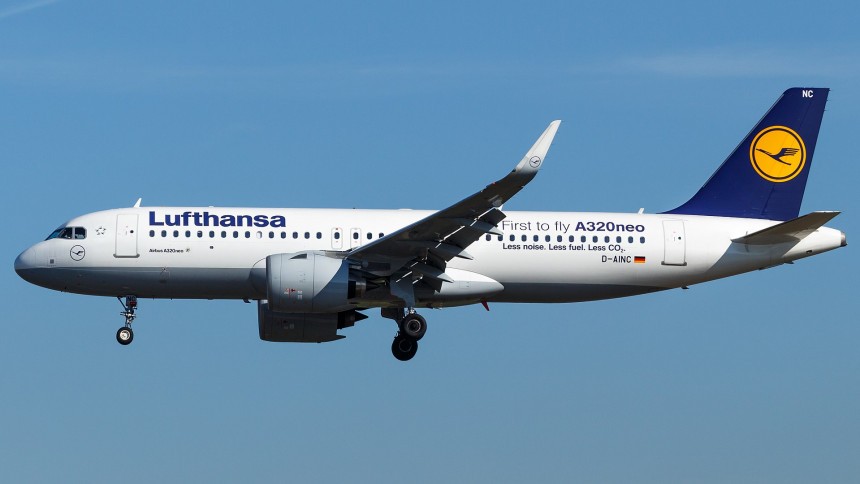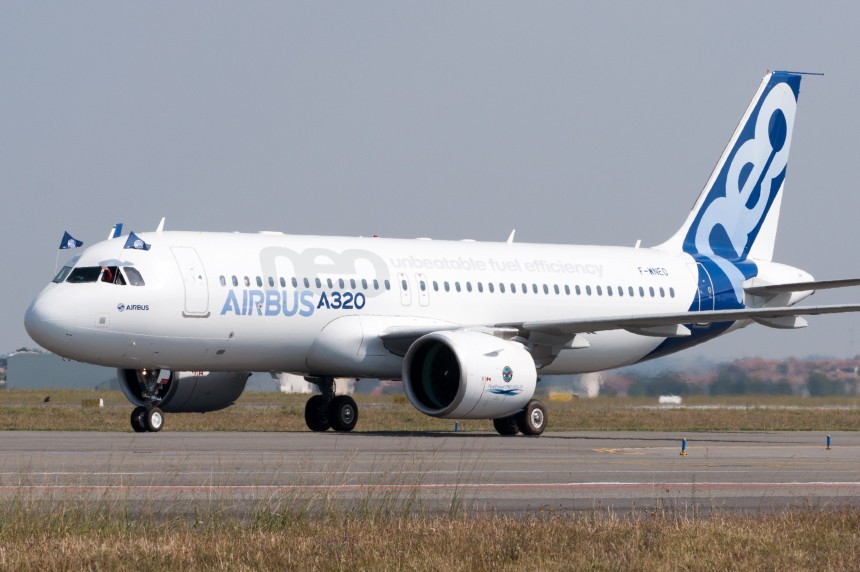For decades, American domestic passenger travel was the domain of Boeing, McDonnell Douglass, and not much other than that. There are exceptions, of course. We didn't forget you, Convair, Embraer, Lockheed, and Bombardier. But the fact remains all roads in U.S. passenger air once traveled at least partially through Seattle, Washington.
After Boeing acquired their rivals at McDonnell Douglass in August 1997, Boeing's effective monopoly on the American airliner space wouldn't be challenged for the next quarter century. But that monopoly only applied to the western hemisphere. Over in Europe, a multi-national group of aviation engineers quietly assembled a team to one day challenge Boeing's dominance of the airliner space.
From the Most Humble Beginnings
As far as narrow-body, single-aisle airliners, the true book-end to Boeing's unrivaled dominance came in the form of one plane; the Airbus A320neo. A descendant of one of Airbus's first smash-hit jetliners in North America, the A320neo takes a format as old as airliners themselves and brings a level of refinement that redefined cheap domestic air travel. But to understand how this Airbus changed American skies forever, we need to know the story behind the formation of the company itself.
With offices in the Netherlands, France, Spain, and Germany, Airbus added Withcita, Kansas, to its list of global HQs in 2002. It was able to do so because back in 1972, a collection of languishing European aerospace contractors agreed to pool together their collective resources. All in the effort of taking a crack at challenging the alphas of the airliner space. Dubbed Airbus Industrie GIE in 1970, national barriers soon became a non-factor in the effort to drum up enough resources to create an aerospace juggernaut.
Even before its formal organization, executives of European aerospace contractors agreed more or less that collaboration was all but essential to keep up with Boeing as early as the 1965 Paris Air Show. Among the companies who'd eventually be absorbed into the Airbus monolith included Aérospatiale of Concorde fame, the Matra company, famous for their Magic-series missiles, and Messerschmitt-Bölkow-Blohm, the final evolution of Willy Messerschmitt's old company from World War II.
With French engineers Roger Béteille and Henri Zeigler heading the project, the A300 laid the foundations for the entire company when it made its debut with Air France in 1974. In 1988, the A300 was joined by the A320 family, consisting of the A318, 319, and 321. Sporting two CFM International CFM 56-5 turbofan engines, these units generated a minimum of 22,000 lb (97.9 kN) of thrust each, depending on the specific variant.
In the A320, this equated to a top speed of Mach 0.82 and a range with 150 passengers on board of 3,300 nautical miles (6,100 km). As of 2022 to the present day, over 10,000 variants of the original A320 series were flying with airlines on every continent, including Antarctica. So when the A320neo family hit the skies first with Lufthansa in 2014, consider it like striking while the iron was scalding hot indeed.
Though Airbus claimed the A320neo shared a 95 percent airframe commonality with the OG variants, that five percent that which wasn't made a profound impact. The biggest change, as often happens with updates of legacy airplanes, came in the form of new engines. With a choice of CFM International LEAP-series turbofans or American Pratt & Whitney PW1000, depending on the specific order, no plane in the A320neo family flies sporting less than 24,000 lbf (106.8 kN) of thrust from each engine.
With a layout that can swap two in-flight lavatories for one all-accessible toilet as needed, it allows the A320neo to accommodate more passengers without decreasing seating space or cargo capacity. Couple this with some impressive economy-class legroom regardless of the operators and a spacious business class with four-abreast seating. It's no wonder that over 2,500 orders for this class of airliner have been fulfilled. With a backlog of over 6,000 airframes still to be built, don't expect these birds to leave service any time soon.
With regards to Boeing, the leviathan Airbus has been battling since the 1970s, the A320neo was nothing short of disastrous to their bottom line. The very same month that the A320neo entered service with Lufthansa, Boeing's 737 MAX also entered the fray. But after two fatal accidents in 2018 and 2019 that killed more than 330 people combined, investigators found the reasons to have been largely preventable in nature. All 737 MAXs were then grounded pending an investigation.
As many as 1,000 Boeing aircraft due to be delivered by the start of the 2020s were removed from the order list after these incidents. Loss of credibility in Boeing's quality control and trust in the 737 MAX airframe was cited as the aggravating factor leading to this decision. Meanwhile, not a single A320neo class airliner has been lost in accidents taking place in the air or because of inherent design flaws in the airframe. Only a single loss of hull incident currently mark's the A320 NEO's permanent record with no passenger fatalities and four ground fatalities.
Well, it's funny how half a century can change things. If there's one thing this teaches us, it's that what you really need to challenge Boeing in the airliner space it's a whole jet-load of patience and 50 years' worth of time for them to make their own mistakes. It's a formula that's seen Airbus grow to be a leviathan. A strategy that works like a charm, as it happens.
From the Most Humble Beginnings
As far as narrow-body, single-aisle airliners, the true book-end to Boeing's unrivaled dominance came in the form of one plane; the Airbus A320neo. A descendant of one of Airbus's first smash-hit jetliners in North America, the A320neo takes a format as old as airliners themselves and brings a level of refinement that redefined cheap domestic air travel. But to understand how this Airbus changed American skies forever, we need to know the story behind the formation of the company itself.
With offices in the Netherlands, France, Spain, and Germany, Airbus added Withcita, Kansas, to its list of global HQs in 2002. It was able to do so because back in 1972, a collection of languishing European aerospace contractors agreed to pool together their collective resources. All in the effort of taking a crack at challenging the alphas of the airliner space. Dubbed Airbus Industrie GIE in 1970, national barriers soon became a non-factor in the effort to drum up enough resources to create an aerospace juggernaut.
Even before its formal organization, executives of European aerospace contractors agreed more or less that collaboration was all but essential to keep up with Boeing as early as the 1965 Paris Air Show. Among the companies who'd eventually be absorbed into the Airbus monolith included Aérospatiale of Concorde fame, the Matra company, famous for their Magic-series missiles, and Messerschmitt-Bölkow-Blohm, the final evolution of Willy Messerschmitt's old company from World War II.
Bring It On, Boeing
Also involved with this new European super group were the British Hawker Siddely Company, designers of the original Harrier Jump Jet, and the French-state-run Nord Aviation, among others. At a meeting between the founding parties, a concept for a 260-seater, wide-body airliner was devised with twin turbofan engines and a range sufficient to make cross-Atlantic travel practical. After further details were fleshed out between French, British, and German ministers, the design was finalized for what would become the Airbus A300.With French engineers Roger Béteille and Henri Zeigler heading the project, the A300 laid the foundations for the entire company when it made its debut with Air France in 1974. In 1988, the A300 was joined by the A320 family, consisting of the A318, 319, and 321. Sporting two CFM International CFM 56-5 turbofan engines, these units generated a minimum of 22,000 lb (97.9 kN) of thrust each, depending on the specific variant.
In the A320, this equated to a top speed of Mach 0.82 and a range with 150 passengers on board of 3,300 nautical miles (6,100 km). As of 2022 to the present day, over 10,000 variants of the original A320 series were flying with airlines on every continent, including Antarctica. So when the A320neo family hit the skies first with Lufthansa in 2014, consider it like striking while the iron was scalding hot indeed.
Though Airbus claimed the A320neo shared a 95 percent airframe commonality with the OG variants, that five percent that which wasn't made a profound impact. The biggest change, as often happens with updates of legacy airplanes, came in the form of new engines. With a choice of CFM International LEAP-series turbofans or American Pratt & Whitney PW1000, depending on the specific order, no plane in the A320neo family flies sporting less than 24,000 lbf (106.8 kN) of thrust from each engine.
Impressive Performance, Unmatched Refinement
In some instances, as with the extended A321neo, these engines made as much as 33,110 lbf (147.3 kN) each with Pratt & Whitney PW1133G-JM engines. Though it's pretty difficult to make any headway in the speed department on an airliner, the A320neo and all its variants could maintain that Mach 0.82 top speed of its predecessor while having a range between 6,500 km (3,500 nmi) in the A320neo up to 7,400 km (4,000 nmi) in the A321neo. With dimensions of 123.2 feet (37.5m) in length with a 117.4-foot (35.8-m) wingspan, the A320neo, like its predecessor, sits in the Goldilocks zone of not too big for regional service and not too small for longer routes.With a layout that can swap two in-flight lavatories for one all-accessible toilet as needed, it allows the A320neo to accommodate more passengers without decreasing seating space or cargo capacity. Couple this with some impressive economy-class legroom regardless of the operators and a spacious business class with four-abreast seating. It's no wonder that over 2,500 orders for this class of airliner have been fulfilled. With a backlog of over 6,000 airframes still to be built, don't expect these birds to leave service any time soon.
With regards to Boeing, the leviathan Airbus has been battling since the 1970s, the A320neo was nothing short of disastrous to their bottom line. The very same month that the A320neo entered service with Lufthansa, Boeing's 737 MAX also entered the fray. But after two fatal accidents in 2018 and 2019 that killed more than 330 people combined, investigators found the reasons to have been largely preventable in nature. All 737 MAXs were then grounded pending an investigation.
As many as 1,000 Boeing aircraft due to be delivered by the start of the 2020s were removed from the order list after these incidents. Loss of credibility in Boeing's quality control and trust in the 737 MAX airframe was cited as the aggravating factor leading to this decision. Meanwhile, not a single A320neo class airliner has been lost in accidents taking place in the air or because of inherent design flaws in the airframe. Only a single loss of hull incident currently mark's the A320 NEO's permanent record with no passenger fatalities and four ground fatalities.
Dethroning the Undisputed King
In the end, the results of the A320neo vs. 737 MAX fiasco played a pivotal role in shattering Boeing's domination over the airliner sector. Today, a true duality exists between the two aerospace companies. Depending on who you talk to, some might even argue that for the first time ever, Airbus, not Boeing, has the upper hand going forward. If you had told people this would be the case back in 1970, they'd have probably laughed in your face.Well, it's funny how half a century can change things. If there's one thing this teaches us, it's that what you really need to challenge Boeing in the airliner space it's a whole jet-load of patience and 50 years' worth of time for them to make their own mistakes. It's a formula that's seen Airbus grow to be a leviathan. A strategy that works like a charm, as it happens.























